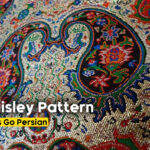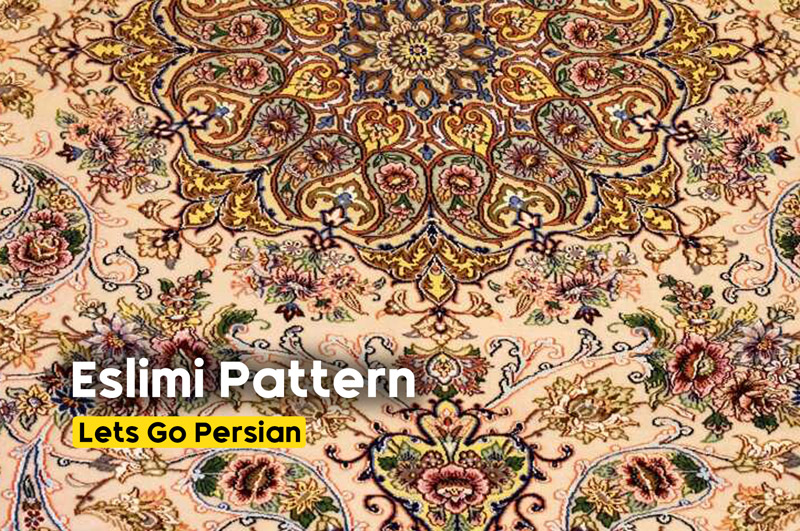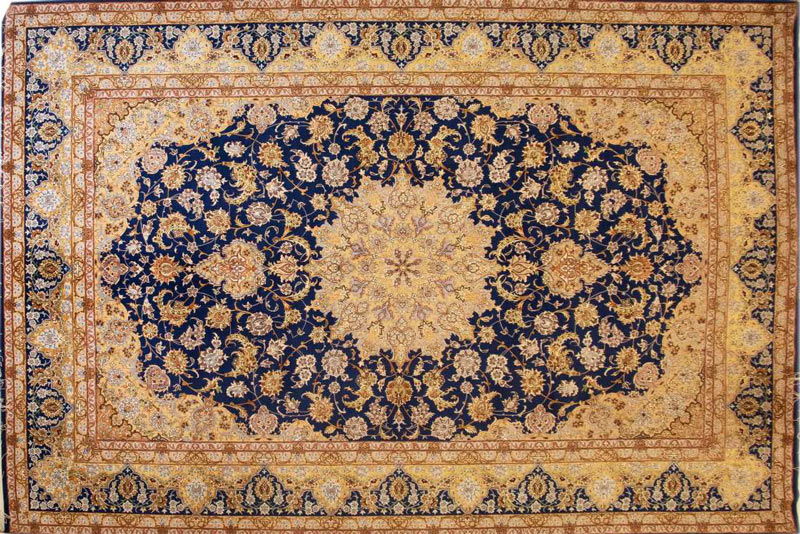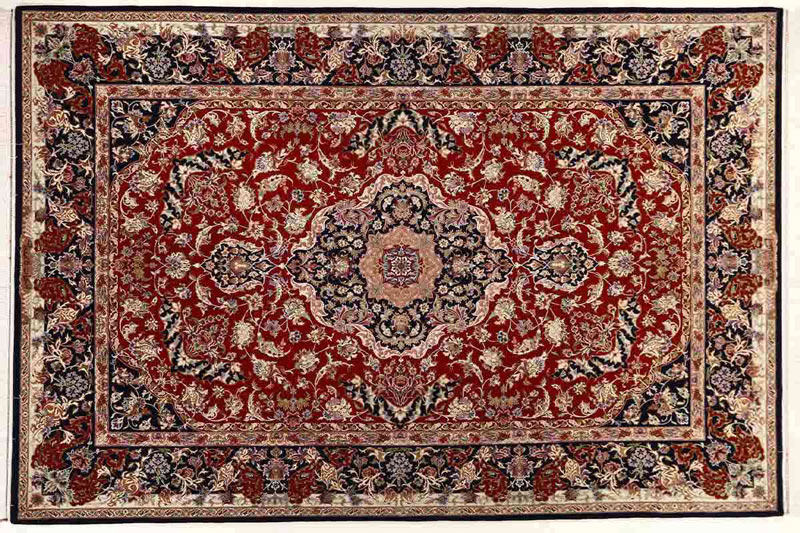
Paisley Pattern

Cleaning Carpets with 5 Different Methods
From Gypsum to Carpets: The Resilience of Eslimi Patterns
The Islamic (Eslimi) pattern is one of the Iranian designs that finds application in various arts. One of the arts where the Islamic way is extensively used is carpet weaving. However, the practices used in Iranian carpet weaving are not limited to one; there are various patterns among them, with the Eslimi way being one of the most prominent. The Eslimi design has a long history dating back to ancient times.

Islamic Pattern:
In traditional Iranian illustration, there are seven main patterns, and the Eslimi pattern is considered one of these seven. The term “Islamic” refers to a plant-like pattern with intertwined stems. The distinctive feature of this pattern is that its beginning and end are indistinguishable. The Eslimi pattern is utilized in various ways, including paintings, inscriptions, carpets, and other arts, sometimes called Islamic design.
Features of the Islamic Pattern:
This pattern symbolizes the tree of life, resembling a grapevine in some instances, adorned with leaves in a specific order and emanating from its base. The curves in this pattern, both inward and outward, are integral parts and indicate an inclination towards the infinite, signifying eternal perpetuity. Although Eslimi design has a long history, dating back to ancient times, its peak and flourishing period can be observed during the Islamic era, representing the evolutionary development of this design.
Background of the Islamic Pattern:
The abstraction of various roles, including plants and animals, into an Islamic style, dates back to 4,000 years before Christ. This method was prevalent in the art of ancient Egyptian and Mesopotamian civilizations and later spread to other nations and cultures, including ancient Greece and Rome. Examining patterns used in Persepolis, images of humans and other animals are abstracted and represented. Additionally, artifacts from the Arsacid era exhibit patterns influenced by Greek architecture. Thus, these patterns can be considered the precursor to plant-based roles in Iranian art.

Plant patterns were more commonly used in gypsum works during the Sassanian era. After the Arab invasion of the Eastern Roman territories and the Iranian realm, their art merged, giving rise to the new Islamic art. Due to religious prohibitions, Muslims couldn’t use animal patterns, so they employed plant patterns in their art and architecture. The Eslimi way was introduced in the form of plant patterns. In the 9th century AD, an evolved practice became known as the Eslimi pattern, reaching its peak and flourishing. The abundant use of Eslimi techniques in the margins and texts of carpets and rug fragments from the 9th century is a testament to Islamic design’s fundamental role and significance.
Types of Islamic Patterns:
The Eslimi pattern comes in various styles, including:
- Simple Islamic Pattern
- Scrolling Islamic Pattern
- Dragon-Mouth Islamic Pattern
- Spiral Islamic Pattern
- Snake Islamic Pattern
The scrolling, scrolling mouth, and dragon-mouth patterns are the most widely used Iranian art—other Islamic patterns include animal, floral, and leafy patterns, which have fewer applications than others.
The dragon-mouth pattern is considered one of the famous patterns among Eslimi designs. In this pattern, the tips of the branches have two symmetrical parts branching out, resembling a dragon’s mouth, and various buds can be seen on the stem in different sections.

Structure of the Islamic Pattern:
The foundation of this pattern is a wavy line, somewhat twisted at the start, known as the “Sarakaj.” A connection is created after the curvature emerges at the starting point, and its rotation does not continue. An image with a narrow head and a belly in the middle is formed in the process. Other analogies are also mentioned regarding the structure of this pattern, with some seeing it as resembling almonds, pine cones, pineapples, raindrops, teardrops, and an Indian parakeet named Soghi.
Unique Structures of the Islamic Pattern:
- Band (Stem): The stem or bar in the Eslimi pattern is similar to the branches of plants, where other parts of the design are placed on the unit.
- Eslimi Band: The Eslimi band connects Eslimi bands to increase their durability.
- Eslimi Head: The Eslimi head includes parts of the Eslimi pattern and symbolizes the Eslimi way, representing leaves, flowers, and buds in plants and ivory in animals.



















